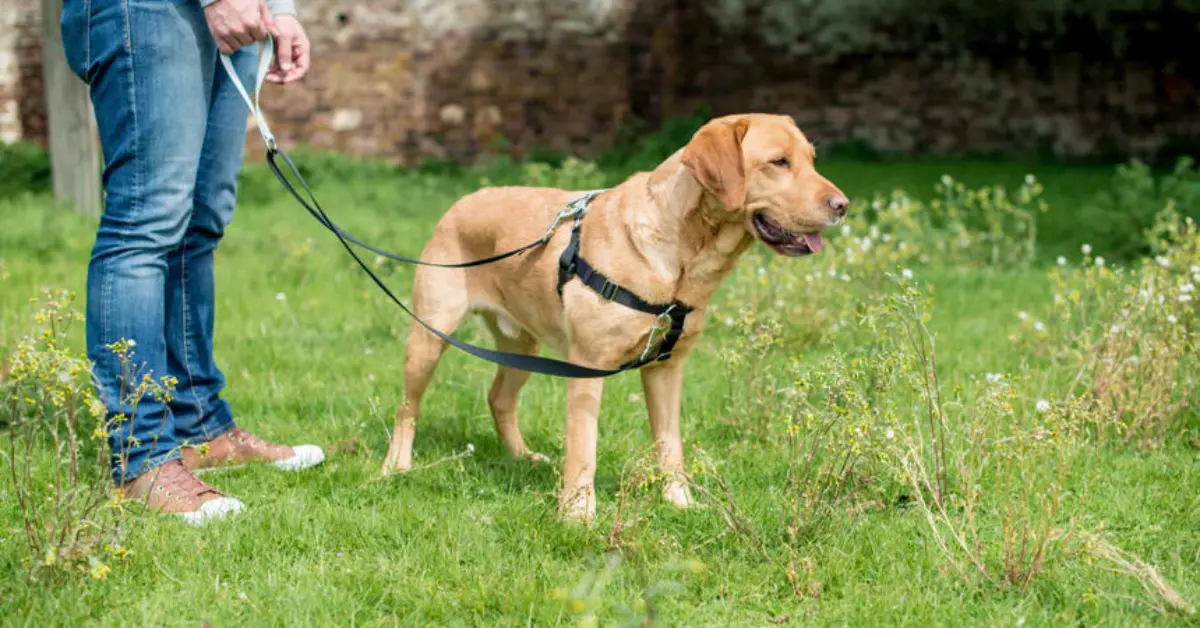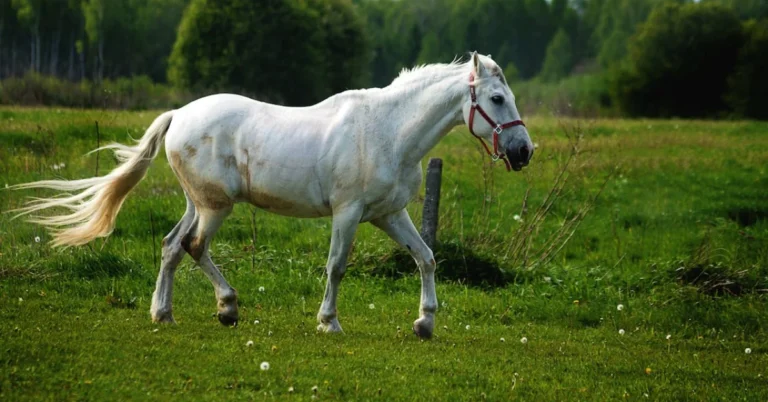Taking your dog for a walk should be fun – for both of you! But I know a lot of people have dogs that pull and lunge on the leash, barking their heads off. It’s no fun to try and walk a dog that acts like that! What you need is to train your dog to walk nicely on a leash. Use treats and praise to reward them when they walk calmly next to you. Learn effective techniques from How to Train a Dog to Stop Barking.
Be patient and keep working on it – a well-trained dog makes going for walks relaxing. With some time and effort, you’ll be strolling down the street with your well-behaved buddy happy at your side instead of dragging you along like a sled dog! Learn how to train a dog to sit during your walks for added control and enjoyment.
The Fundamentals of Training Your Dog
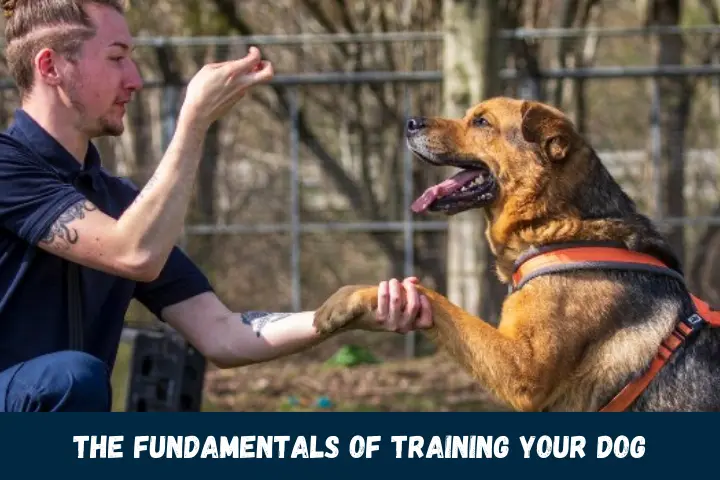
Before you start specifically training for on-leash walking, it helps to understand some basics about how to train a dog the right way. Using rewards, setting them up to win, controlling the environment – these are all important parts of a good training approach.
Positive Reinforcement
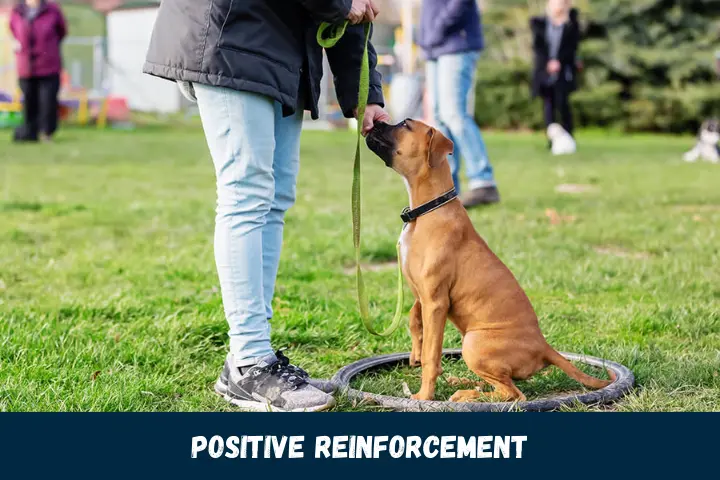
The best way to train dogs these days is through positive reinforcement. It’s pretty simple – you reward your dog when they do things you like so they’ll want to repeat the behavior. Good rewards are ones your dog pays attention to and really wants, like tasty treats or fun toys. It’s important to give them the reward right away after they do what you asked them to do, so they make the connection. That way, they figure out that doing certain things, like sitting politely or walking nicely on the leash, means good stuff is coming their way! Things like little pieces of chicken or cheese make great rewards. But verbal praise can work well too – dogs love getting told “Good dog!” in a happy, friendly voice when they do the right thing.
Set Your Dog Up for Success

Start small, set them up to win at first. Don’t expect too much too fast, especially in distracting places. Begin by teaching basics in low-key areas without a lot going on. Once your dog has mastered those, gradually increase the challenge.
And don’t try to train them when they’re already wired, overly excited, or tired out. Make sure your dog is exercised before you practice, and start out training in mellow spots without tons of distractions. Ease them into more difficult settings bit by bit.
Have Realistic Expectations
Learning takes time! Remain patient, keep sessions short, end on a good note, and remember you’re building a foundation brick by brick. Stick with it and you’ll start to see results!
Getting Prepared for Leash Training
To set your dog and yourself up for leash training success:
Get the Proper Equipment
A properly fitting harness or collar and a sturdy 6-foot leash are essential gear for walking your dog. Retractable leashes do not allow for proper control. Treat pouches are helpful for carrying training rewards easily.
Train Key Skills First
Before training loose leash walking specifically, ensure your dog has mastered skills like sit, down, stay, and focus. These foundation skills will give you valuable tools for redirecting attention when needed. Explore more about leash training in How to Train A Dog to Stay.
Exercise First
Walks are a time for mental exercise, not draining endless physical energy. Ensure your dog has a good physical and mental workout before your training sessions so they’re less likely to act out of pent-up frustration on your walks.
Choose a Distraction Setting
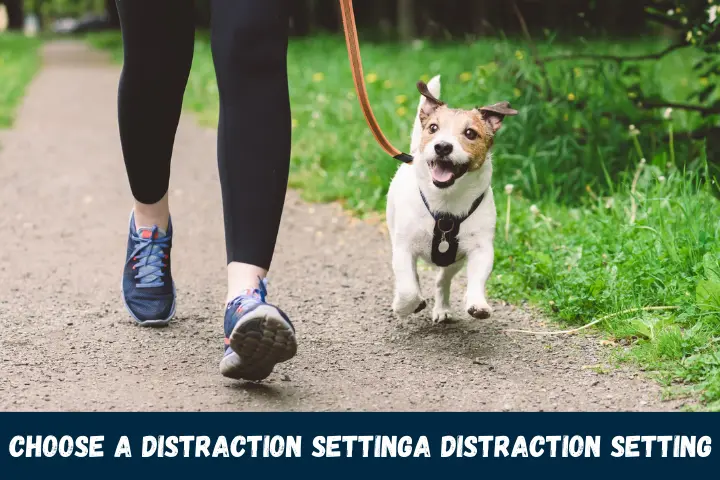
Don’t start in wide-open park spaces with squirrels running everywhere! Choose more confined areas without exciting environmental distractions. This allows you to focus on the mechanics of loose leash walking before adding difficulty.
Mastering Loose Leash Walking
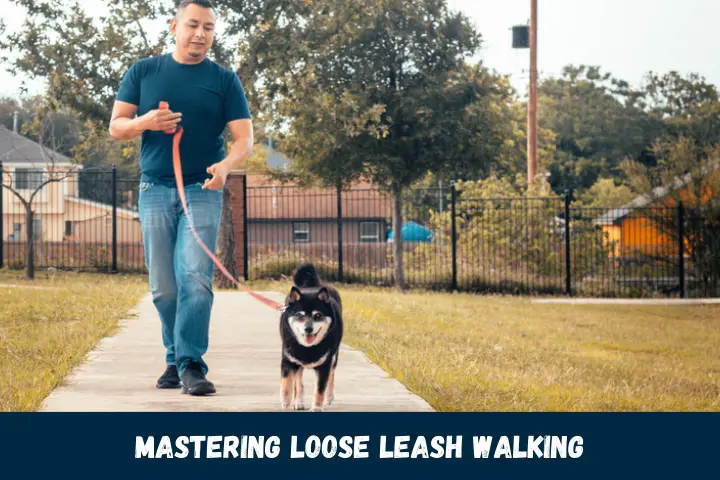
When first teaching loose leash walking, focus on one step at a time instead of expecting perfectly perfect heel position right off the bat. Follow these steps for systematically build this important skill:
Step 1: Reward by Your Side
Holding a reward lure by your side encourages your dog to orient back toward you if they start to forge ahead. Dispense treats frequently whenever your dog chooses to walk near you without pulling, gently guiding them back toward you with the lure if needed. Take just a few steps at a time initially, using treats liberally.
Step 2: Add Cues
Now that your dog is used to focusing on you for rewards when walking calmly near you, put that behavior on cue. Use a phrase like “with me” when your dog is in the desired position, treating frequently when they maintain that position over multiple steps, a helpful technique for training even calm dog breeds.
Step 3: Increase Duration
Gradually extend the duration your dog walks calmly by your side between rewards once they understand the “with me” cue. At first, reward every 1-5 steps, then begin to randomize, rewarding for longer durations with the occasional “jackpot reward,” an effective strategy for how to calm a dog down during walks.
Step 4: Correct Unwanted Behavior
If your dog begins lagging behind or surging ahead, correct the behavior by stopping, using an attention cue like “watch me,” waiting for eye contact, and resuming the walk once they refocus. Reward generously when they reorient to you.
Step 5: Add Changes in Direction
Once your dog grasps the basics of loose leash walking, add turns to keep it interesting. Use directional cues like “this way” or guide your dog with treats. Vary directions and reward active attention. This prevents lagging and encourages engagement.
Step 6: Practice Sit and Down Cues
Now that your dog understands staying near you, practice obedience cues like sit and down while walking. This forces your dog’s attention back to you amid distraction, preparing them for more complex environments. Reward compliance generously.
Step 7: Increase Distraction Gradually
Very slowly add environmental distraction once your dog reliably walks nicely on a leash in low-distraction settings. Be sure to reward frequently for attention in these scenarios and correct unwanted behavior by stopping the walk. If your dog struggles, revert back to an easier environment for a while longer before attempting more distraction.
Advanced Leash Skills
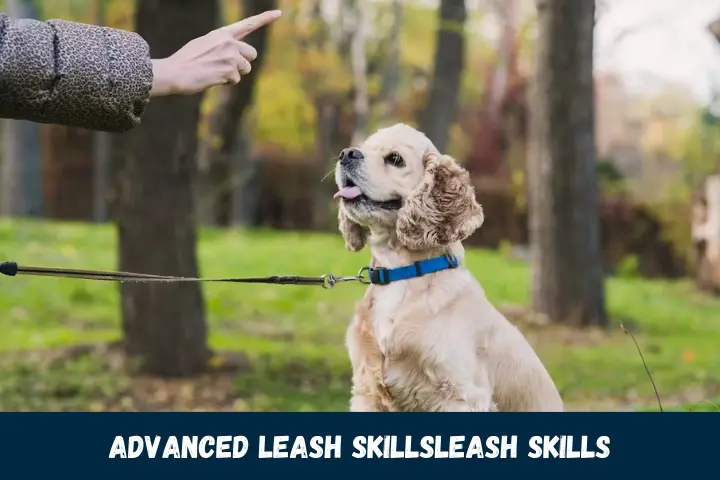
Once your dog masters standard loose leash walking, there are additional useful skills to train for real-world situations:
- Polite Greetings: For meeting calmly on leash, both dogs should sit before greeting. Reward non-reactivity.
- Heeling in Crowds: Teach your dog to walk focused right by your side using a special cue like “close.” Useful for crowded sidewalks.
- “Leave It” Skill: Say “leave it” when your dog shows interest in a distraction and reward disengagement from the distraction. Essential for impulse control.
- Emergency Stop: Useful cue for emergencies. The dog should stop instantly and await the next cue when you say “Stop!”
Troubleshooting Common Leash Frustrations
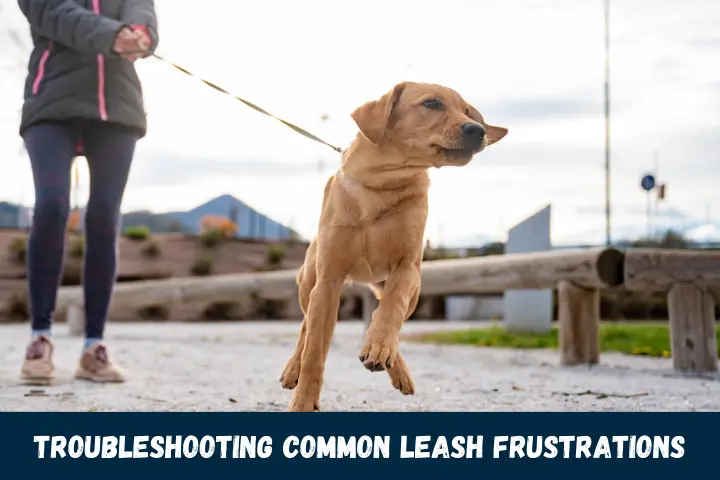
If you encounter challenges in your leash training journey, consider these common issues and solutions:
Pulling
- Stop and change directions frequently using treats to entice your dog back toward you, rewarding every few steps.
- Practice attention exercises during pauses to re-focus your dog’s mind back on you amid environmental temptation.
- Ensure your dog receives adequate physical exercise before training sessions.
Lagging and Sniffing
- Make yourself excited! Use happy voices, toys, and high-value treats to motivate forward momentum from your dog.
- Practice quick pace changes to prevent lingering. Reward your dog for keeping up with you.
- Set a realistic baseline pace for your dog depending on factors like age, size, and fitness level.
Barking/Reactivity
- Create more distance from triggers if your dog reacts and work at their threshold distance where they can remain calm.
- Reward quiet, relaxed behavior abundantly in the presence of triggers they previously barked at.
- Avoid punishing reactive behavior directly. This can worsen fear and anxiety responses.
Remember, change takes time! Stick with these troubleshooting tips for a few weeks before expecting definitive improvement.
Keys for Success in Your Loose Leash Training Journey
As you embark on leash training with your canine companion, keep these key tips in mind:
Stay Positive
Remember, you catch more flies with honey! Skip punishment and corrections and stick with rewards-based methods. Maintain a happy, relaxed demeanor throughout training.
Keep Sessions Short
Multiple short, focused training sessions of just 5-15 minutes deliver better results than marathon sessions where you and your dog get frustrated and overwhelmed. Quit while you’re ahead!
Make It a Lifestyle
Weave training into your normal routine instead of isolating it to certain times. Practice attention exercises while watching TV together or put cues on behaviors during backyard playtime.
Track Progress Consistently
Note training highs and lows in a journal. Over time, you’ll see patterns emerge. Knowing if your dog struggles more in certain environments or at certain times helps you continue to set them up for success.
Final Thoughts
Loosen up and play! Training should strengthen your bond. Incorporate toys and make it a rewarding experience for both parties. Your positive energy will be infectious.
By following these leash training tips, you can start to transform those chaotic walks into peaceful strolls with your best friend. Remember, stay positive, reward generously, train consistently in short bursts, and make it fun! With time, practice, and patience, you’ll be enjoying harmonious walks in no time.

